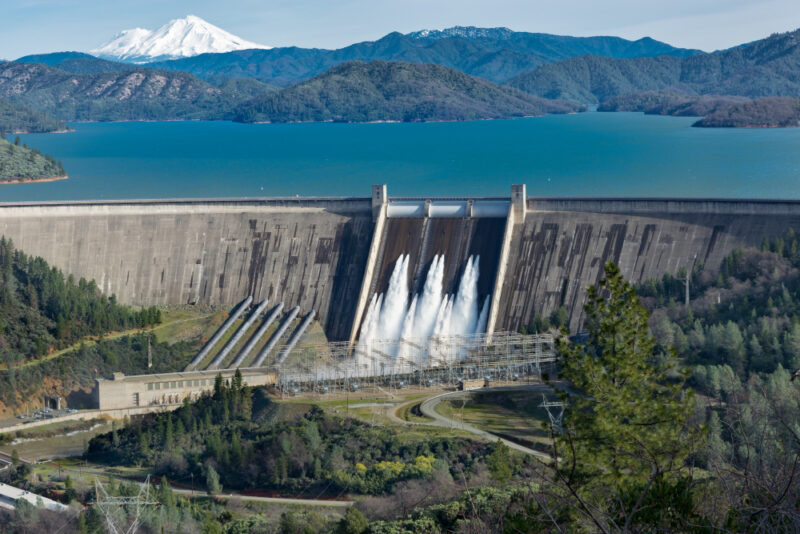Water reservoirs are critical for ensuring water supply, supporting hydroelectric power generation, managing floods, and providing recreational opportunities. In this blog post, we will explore America’s largest water reservoirs, marvels of engineering and natural beauty.
From Lake Mead to Toledo Bend Reservoir, these reservoirs not only play a crucial role in meeting the water needs of communities but also offer stunning landscapes and recreational activities. Let’s delve into the features and significance of these remarkable water bodies.
Lake Mead (approximately 100 words)
Located on the Colorado River, Lake Mead is the largest water reservoir in the United States. Its massive water capacity serves as a vital water source for millions of people in Nevada, Arizona, and California. Additionally, Lake Mead plays a crucial role in hydroelectric power generation and offers a range of recreational activities such as boating, fishing, and camping.
However, the reservoir’s water levels have faced challenges due to drought and increased demand, highlighting the importance of sustainable water management practices.
Lake Powell
Situated on the Colorado River, Lake Powell is the second-largest reservoir in the United States. It provides water storage, hydroelectric power, and recreational opportunities. The reservoir’s impressive size and scenic beauty attract visitors from around the world. Boating, fishing, and hiking are popular activities at Lake Powell, allowing visitors to immerse themselves in the stunning canyons and expansive waters.
However, the reservoir has also faced water scarcity issues due to extended drought periods, emphasizing the need for efficient water usage and conservation efforts.
Lake Sakakawea
Formed by the Garrison Dam on the Missouri River, Lake Sakakawea is the third-largest reservoir in the country. It serves as a vital water source for agriculture, municipal supply, and industrial use.
The lake’s sprawling shoreline and picturesque landscapes make it a haven for outdoor enthusiasts, offering opportunities for boating, fishing, and wildlife watching. Lake Sakakawea also supports important fish and wildlife habitats, contributing to the region’s ecological diversity and natural beauty.
Fort Peck Lake
Situated on the Missouri River in Montana, Fort Peck Lake is one of the largest reservoirs in the United States. This reservoir serves multiple purposes, including flood control, hydropower generation, and irrigation for agriculture. It also offers ample recreational activities such as fishing, boating, and camping, attracting nature enthusiasts and outdoor adventurers.
The reservoir’s vast expanse of water and surrounding scenic landscapes create a serene environment for visitors to enjoy and appreciate the region’s natural wonders.
Lake Oahe
Formed by the Oahe Dam on the Missouri River, Lake Oahe is the fifth-largest reservoir in the United States. It provides water storage, flood control, and hydroelectric power generation.
The lake’s picturesque surroundings, characterized by rugged bluffs and tranquil waters, offer opportunities for boating, fishing, and wildlife observation. Lake Oahe is also known for its significance to the region’s Native American history and culture, with several historic sites and cultural attractions in its vicinity.
Lake Havasu
Created by the Parker Dam on the Colorado River, Lake Havasu is a significant reservoir that spans Arizona and California. Known for its crystal-clear waters and stunning desert landscapes, Lake Havasu attracts visitors with its recreational offerings. Boating, water sports, and fishing are popular activities in this vibrant reservoir.
Moreover, the iconic London Bridge, relocated and reconstructed at Lake Havasu, adds a unique charm to the area, making it a captivating destination for tourists and locals alike.
Lake Oroville
Nestled in Northern California, Lake Oroville is one of the state’s largest reservoirs. It plays a vital role in water supply, hydroelectric power generation, and flood control. The reservoir’s serene waters provide opportunities for boating, fishing, and camping, making it a favorite spot for outdoor enthusiasts.
The surrounding landscapes, including the Oroville Dam and the Feather River, offer scenic beauty and recreational activities. However, the reservoir has faced challenges due to drought conditions and the need for balanced water management to ensure both human needs and environmental preservation.
Toledo Bend Reservoir
Straddling the Texas-Louisiana border, Toledo Bend Reservoir is one of the largest reservoirs in the southern United States. It serves as a vital water source for both states, supporting municipal supply, irrigation, and industrial needs.
The reservoir’s expansive waters and diverse shorelines make it a paradise for fishing enthusiasts, hosting numerous bass fishing tournaments. Boating, water skiing, and camping are also popular activities. Toledo Bend Reservoir’s natural beauty and recreational opportunities contribute to the region’s tourism and economy.
Conclusion
America’s largest water reservoirs are more than just sources of water and power; they offer opportunities for adventure and relaxation. With the use of float switch technology, we can ensure that we use these lakes responsibly and sustainably. As we marvel at their beauty and rich history, we must also be mindful of our water consumption habits and work to conserve this precious resource.
By doing so, we can preserve these natural wonders for generations to come, and continue to enjoy the benefits they offer. Let us appreciate these reservoirs, and commit to being responsible stewards of our natural resources.










